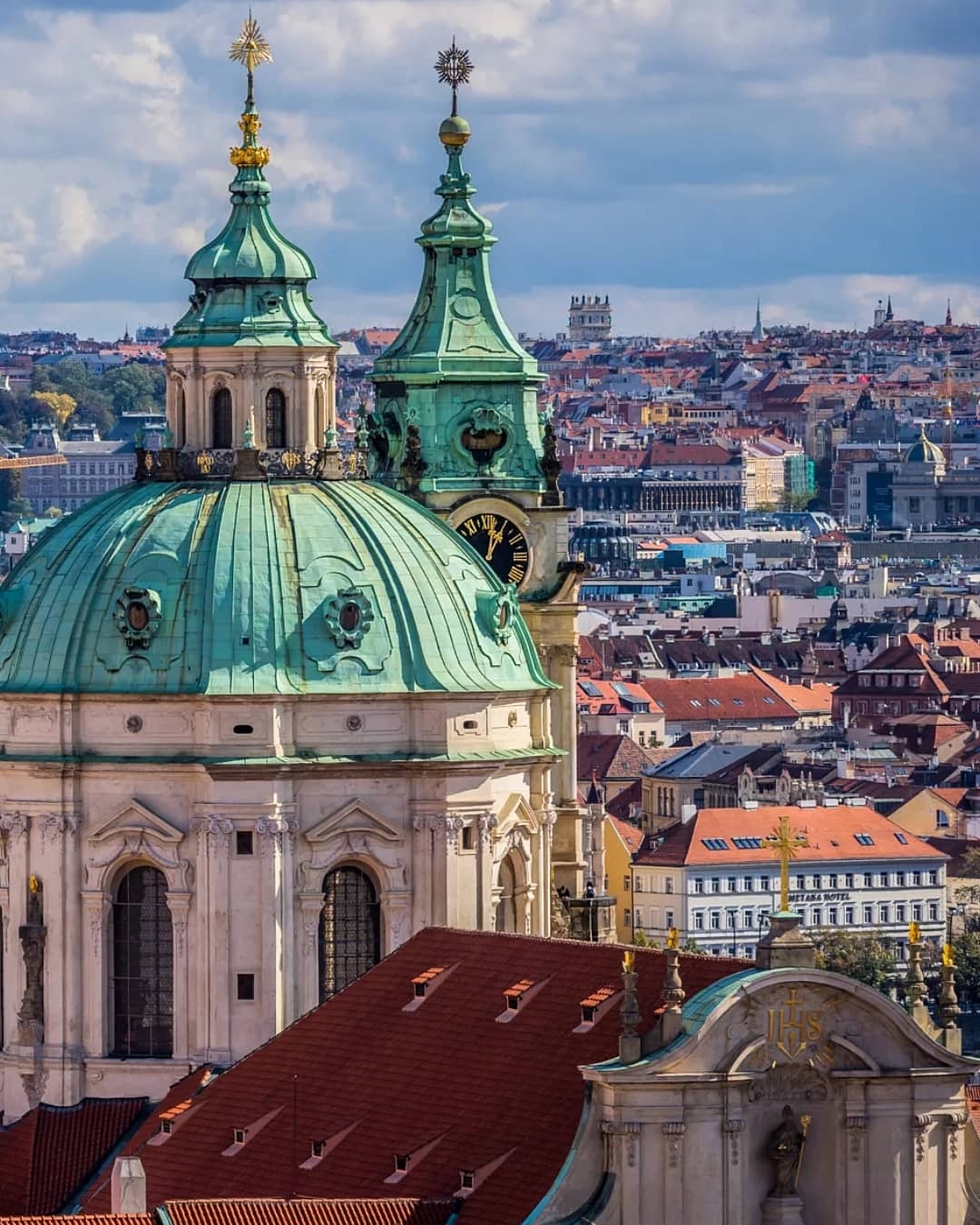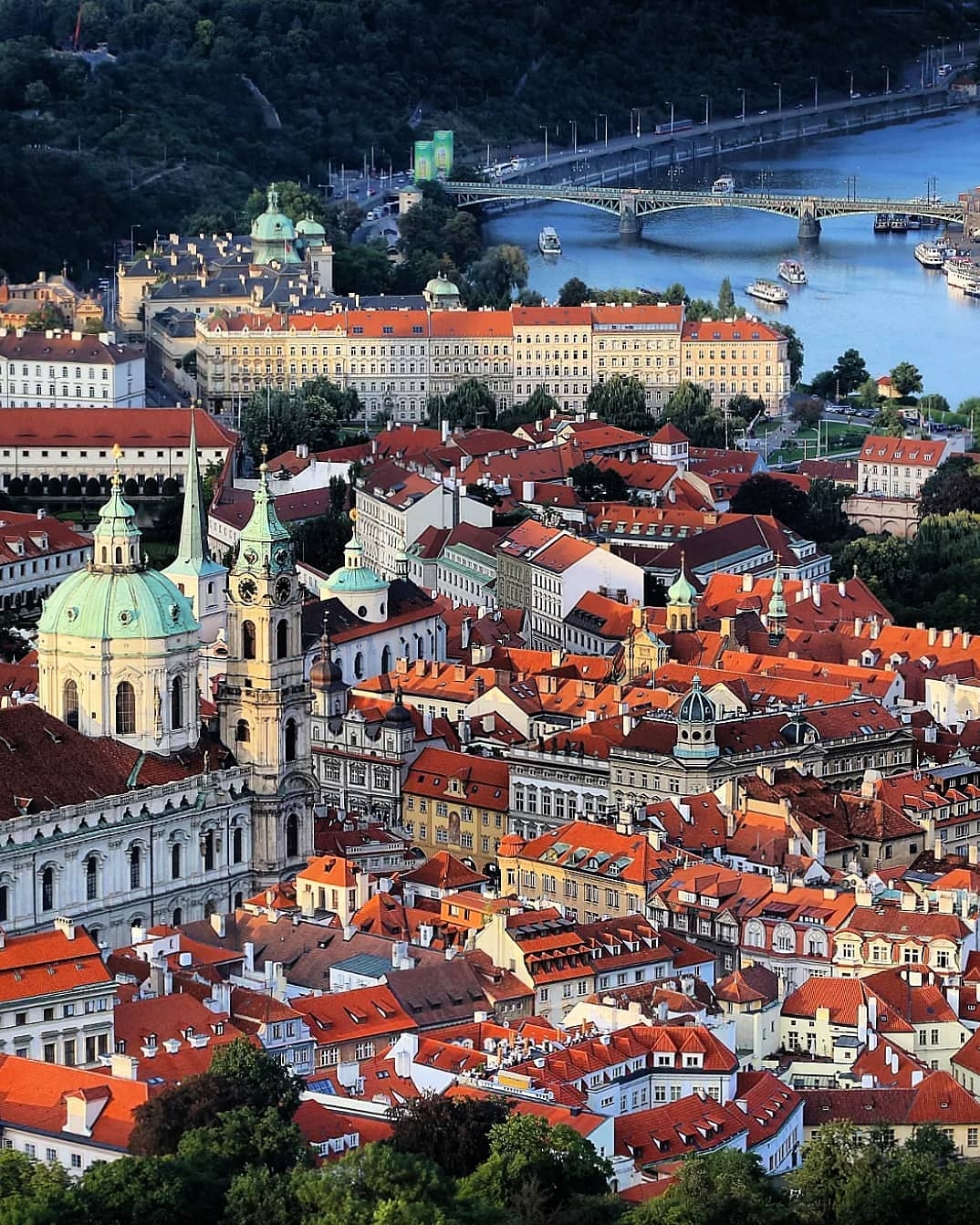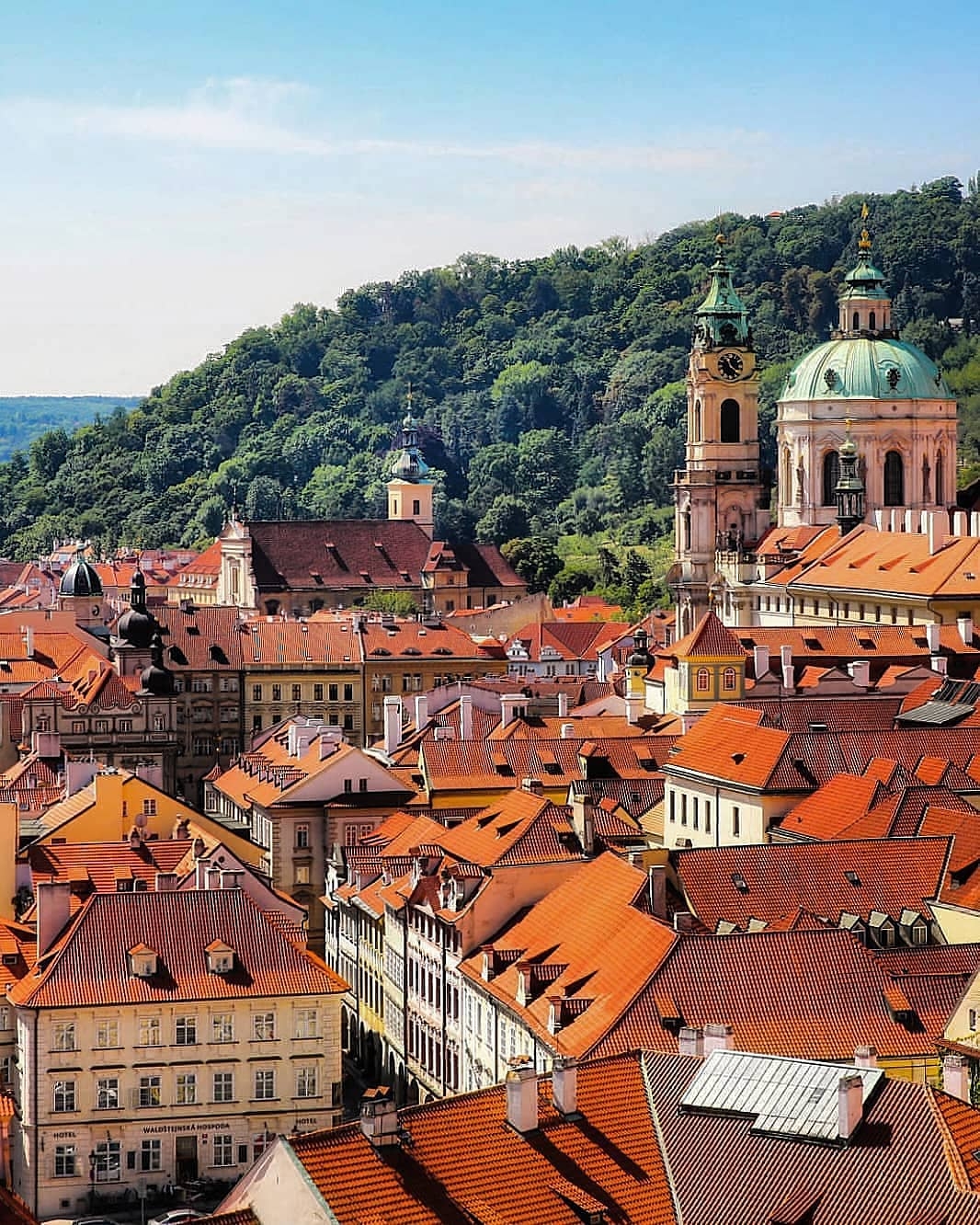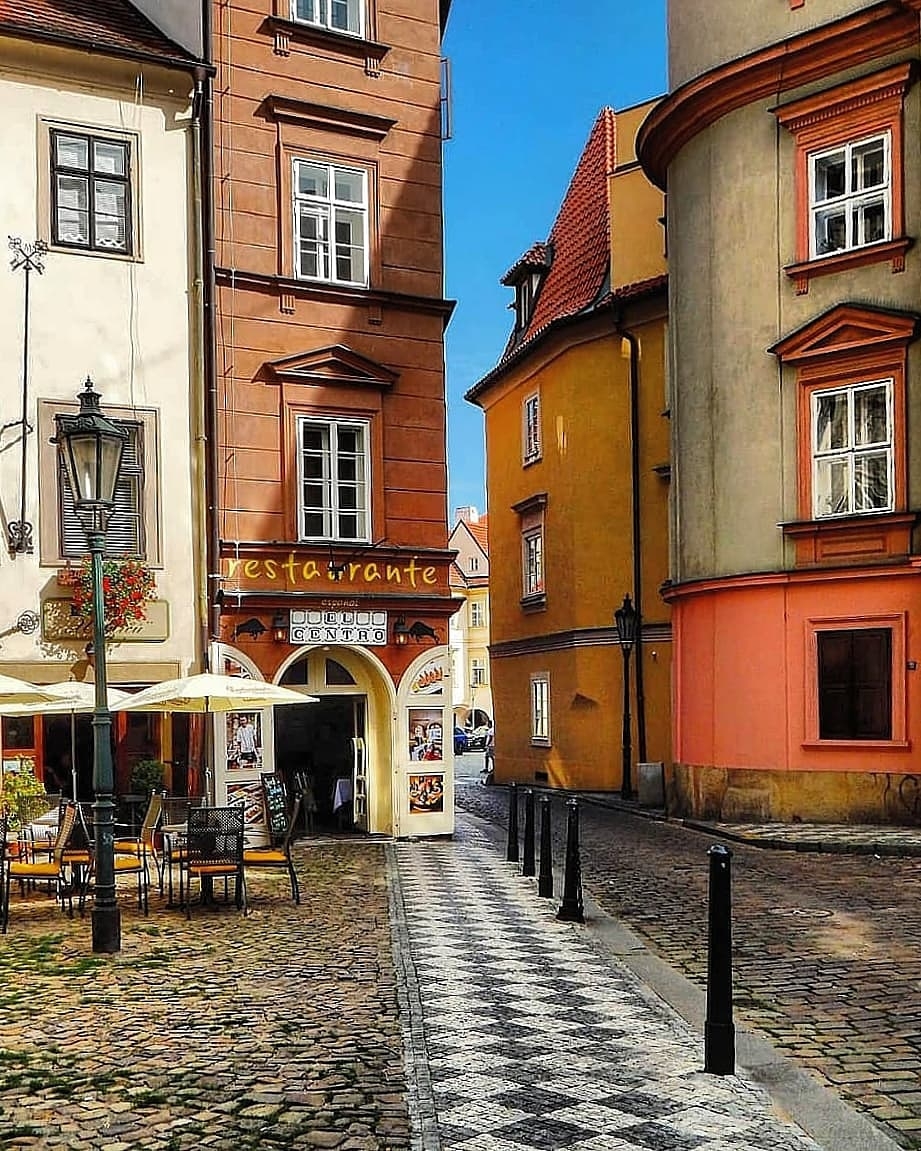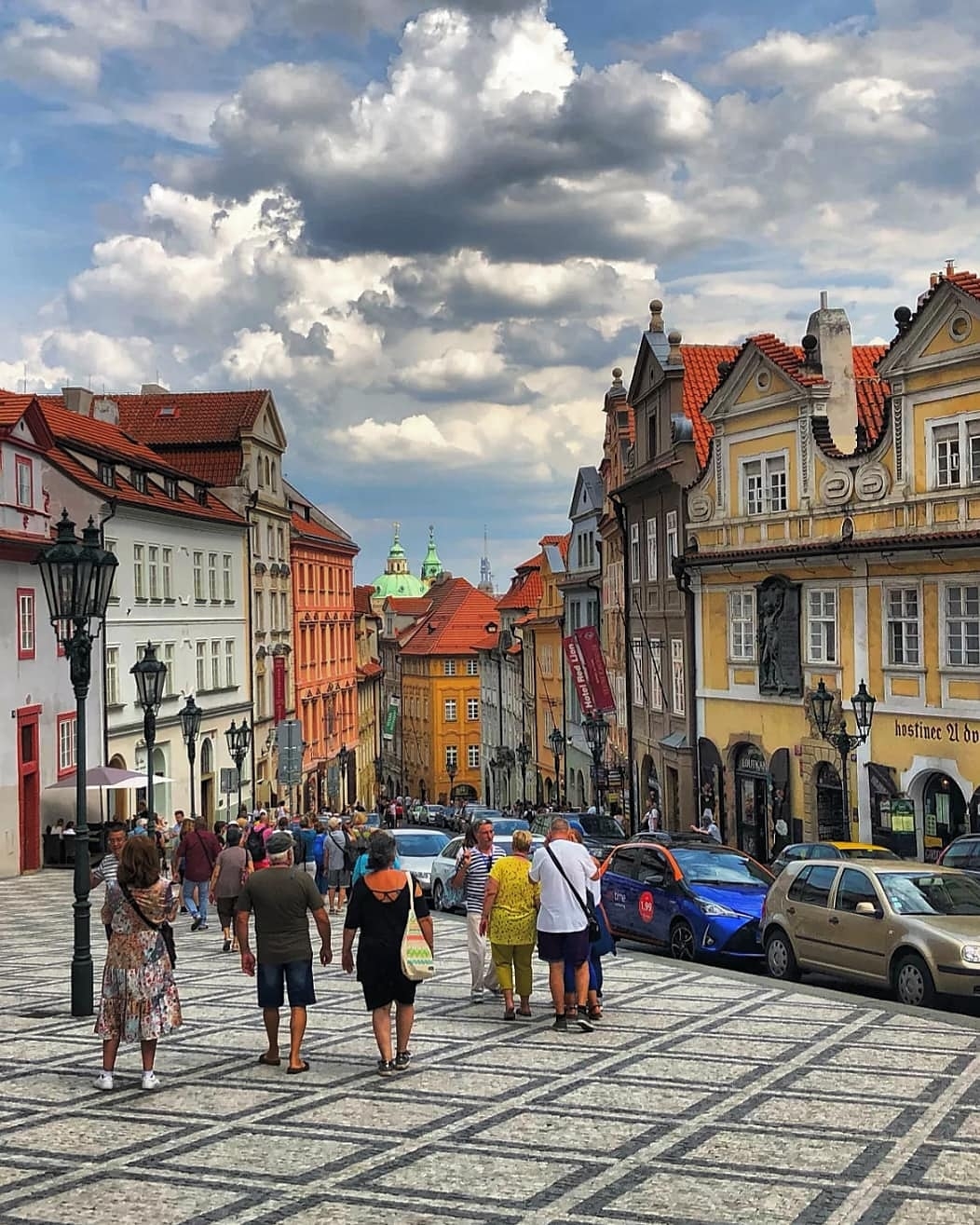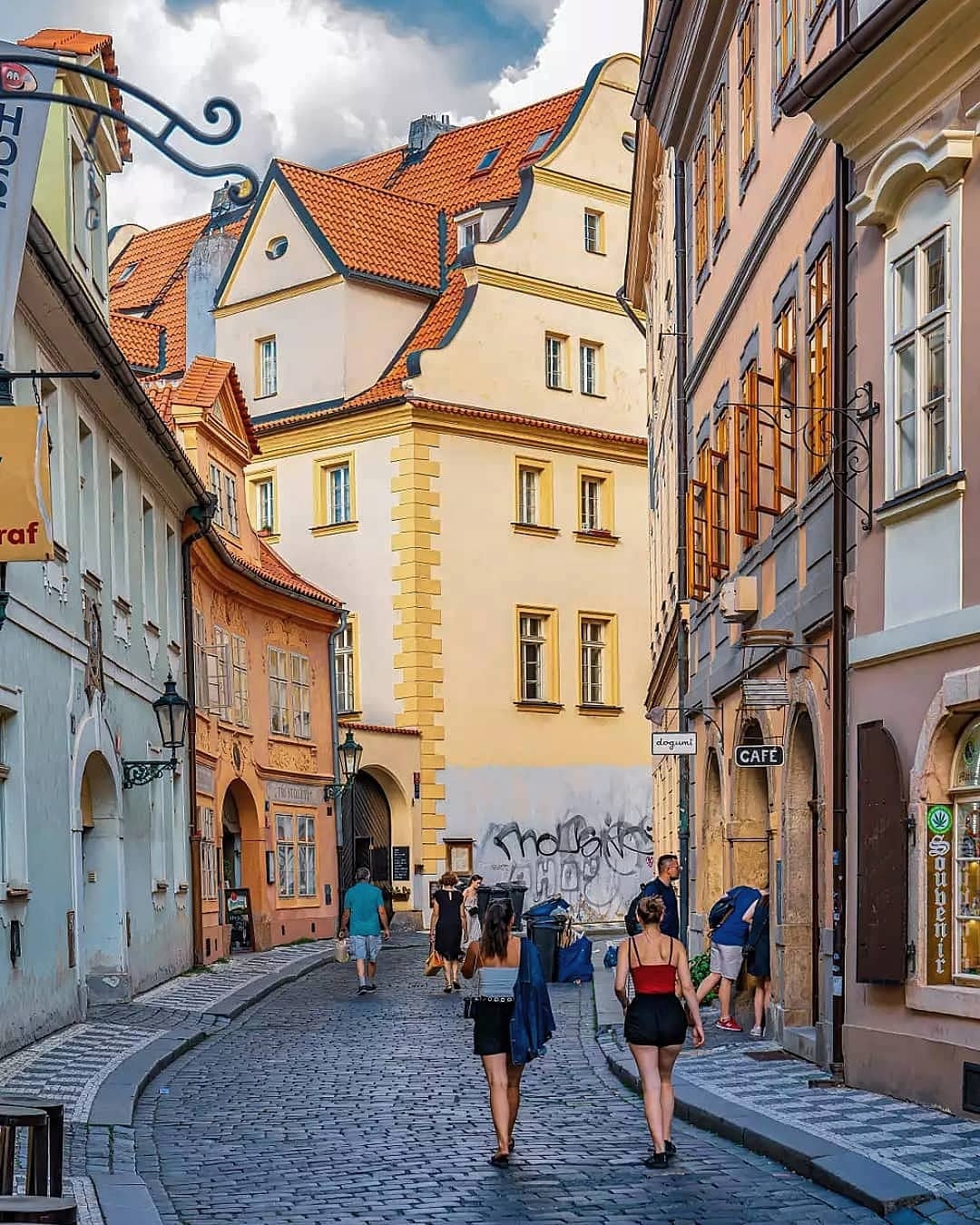THE FABULOUS FACADES OF HOUSES, THE NARROW LANES AROUND MALTESE SQUARE, MAGNIFICENT PALACES WITH GARDEN ENSEMBLES BELOW PRAGUE CASTLE, THE KAMPA ISLAND ENVELOPED BY ČERTOVKA IT IS THE LESSER QUARTER – A PEARL OF THE BAROQUE.
The Lesser Quarter was founded in 1257 during the reign of Přemysl Otakar II, as a result of consolidation of small settlements situated under the Prague Castle. The townsmen were mostly German ncraftsmen invited by the king to Prague. The king gave them multiple privileges. Devastating fires in 15th–16th centuries became a real disaster and at the same
time, – source of new construction. Some old city quarters were totally destroyed and in their place were built luxurious palaces for nobles in Baroque style. On the Wallenstein Square (Valdštejnské náměstí), near metr ostation Malostranská, is located Wallenstein Palác ewith the French park. This enormous palace complex was built (1623– 30) for the legendary general fro mthe Thirty Years War, Albrecht von Wallenstein. The in-geniously landscaped garden is adorned with copies of bronze statues made by Adrien de Vries, the originals of which were taken away as booty by Swedish army at the end of the Thirty Years War. The Churc hof St. Nicholas with a dominating copula and bell-tower in the centre of the Lesser Quarter is one the
most well-known constructions of Prague’s baroque, was built as early as the 13th century by architect’s Dientzenhofers. The central position in the church too kfour sculptures of saints fathers and gilded statue of St. Nicholas. The beautiful overhead fresco, occupying the place of 1500 square meters, represents th eapotheosis of St. Nicholas, is the biggest in Europe. In the second half of the 18th century in the temple wasset up an organ. On it played W. A. Mozart during his visits to Prague. Yet another architectural gem, namely the Church of St. Thomas, whose Gothic ground plan attests to its foundation in the 13th century. I twas beautifully rebuilt in the baroque style. The high altar is decorated with two Rubens paintings (th eoriginals have been replaced by copies and are deposited at the National Gallery). The Marian Colum nin the middle of the Lesser Town Square is an early 18th century baroque structure with statues of Bohemia’s. The further path can be extended by Carmelita Street (Karmelitská) where there is another attraction :Church of Our Lady Victorious which was originally a Lutheran prayer house, given to the Carmelites a tthe time of re-Catholicisation. The church is famous especially for the figure of the Bambino di Praga (Infant Jesus of Prague), donated to the church by Polyxena of Lobkowicz in 1628. The wax figure which I sattributed miraculous powers, comes from Spain. During the year, a figure several times changed in different dresses. Total them is 46. Green with gold embroidery dress personally sewed the Empress Maria Theresa. Under the Charles Bridge you will see a picturesque corner called Kampa. This artificially constructed island is separated from the Lesser Town by a millstrea mknown as Čertovka /‘Devil’s Stream’/, which set in motion the local mills. Charming houses by the water and the island’s location earned it the nickname “the Venpice of Prague”.

